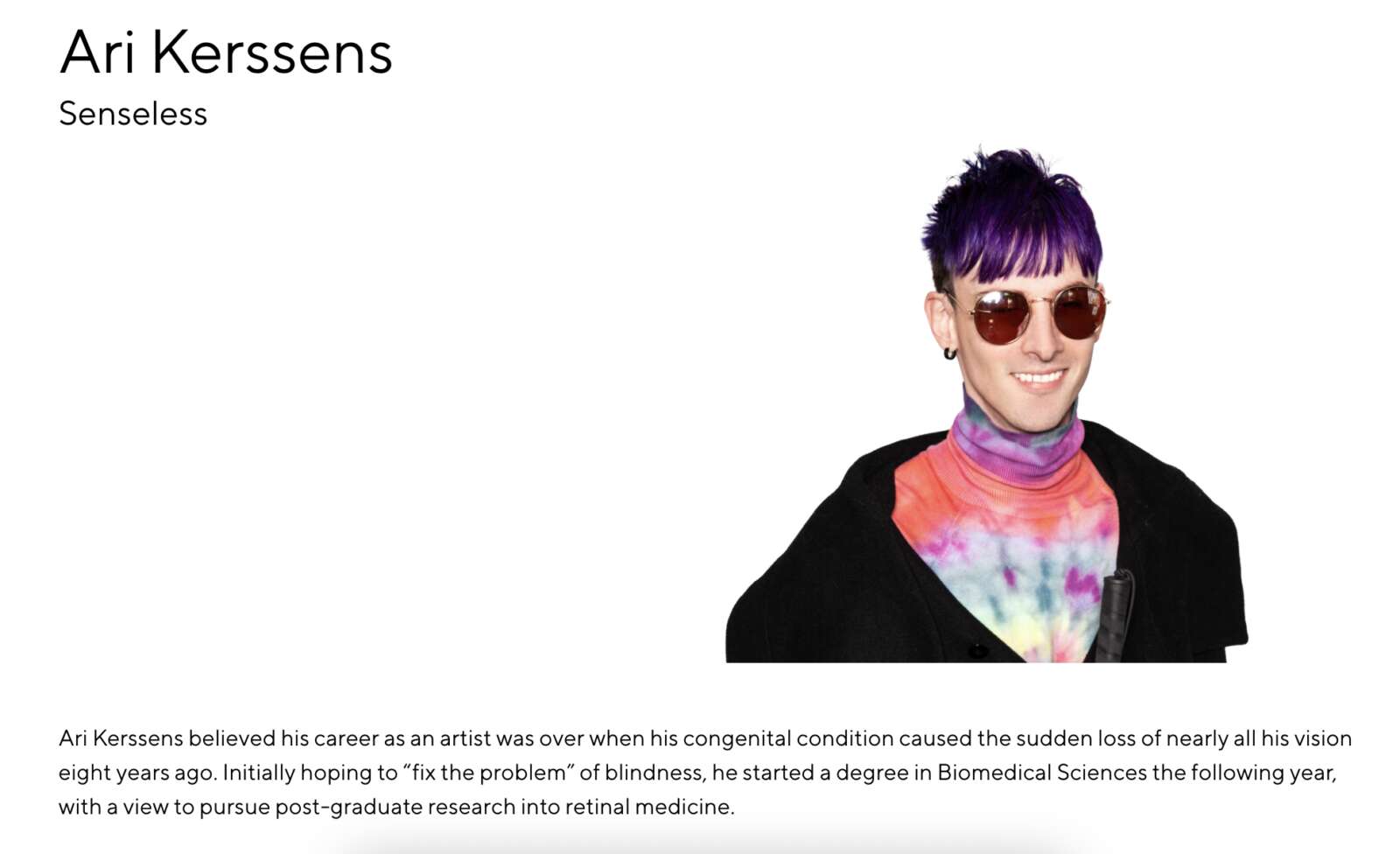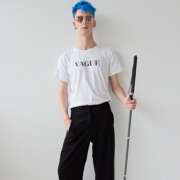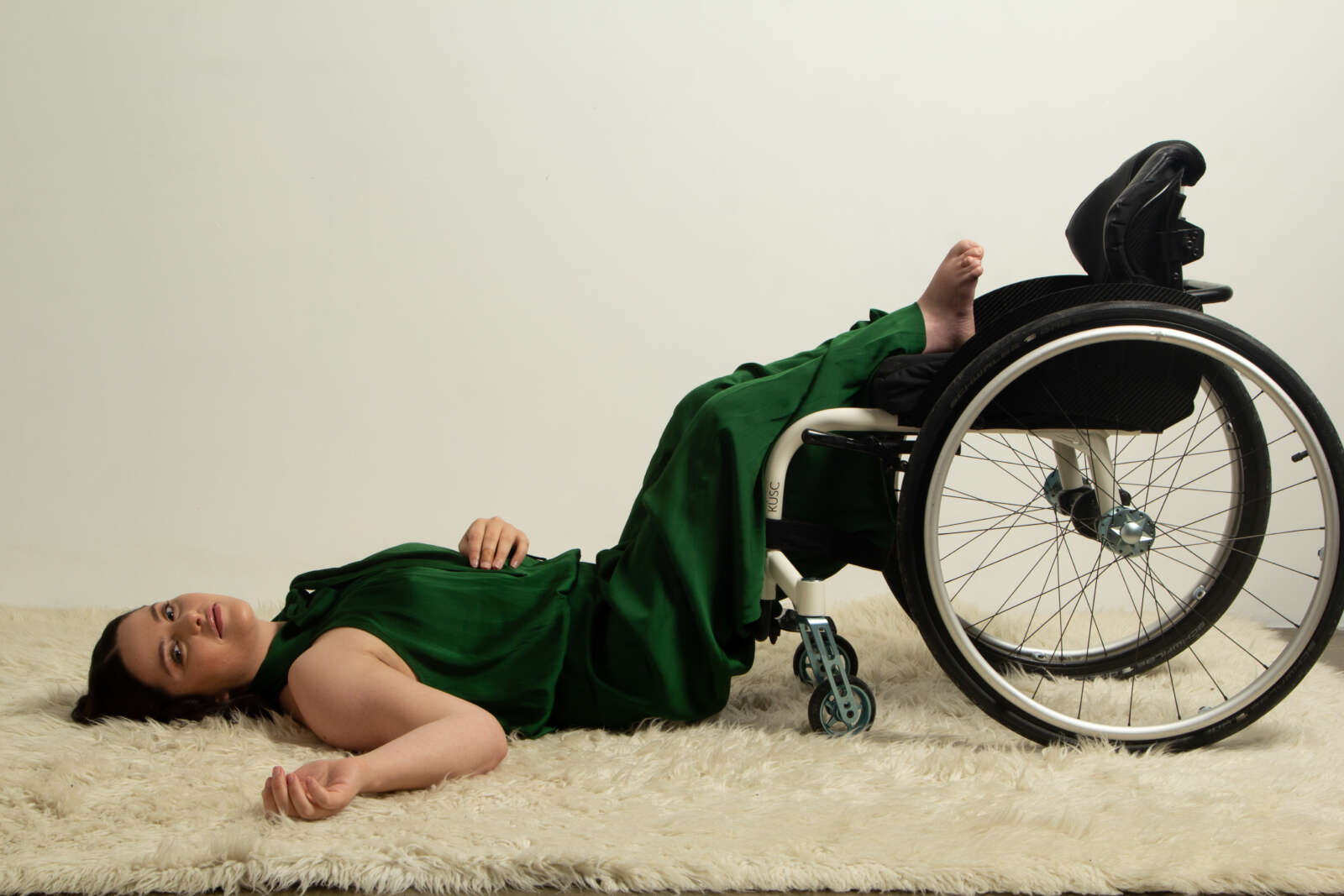Update: in a press release [https://www.beehive.govt.nz/release/govt-extending-cost-living-support] on December 14 2022, the NZ Government announced and later clarified that the Total Mobility subsidy will remain at 75% indefinitely. While the scheme is still under review, this is certainly a step in the right direction.
If I had to sum up this article in as few words as possible, it would be as follows:
“Disabled” is a verb, not an adjective!
Ponder this message. Does it resonate?
Some people inherently understand what I mean. I find these people tend to have lived experience of disability, either their own or a close friend/family member’s.
In this article, I want to explore what I mean when I say it, and why representation, and being deliberate in *how* we represent disability, is crucial to spreading this message and understanding.
The History
Advocacy wasn’t really a thing until the 1950s, when it spread out from America on the new-fangled, post-war airwaves over the following decades. Before then, institutionalization was rife. The cultural norm was to sweep disability under the rug, to pay organizations to bear the burden of these so-called “invalids”. Often, there was no consideration of the rights of said invalids, let alone their wants, hopes, dreams, or agency as human beings. Care was paternalistic and, quite frankly, horrible.
New Zealand’s Jubilee Institute for the Blind, for example, exemplified these views. Blind “inmates”, as they were referred to, were kept in near-slavery. As second-class citizens, they were barred from befriending or, heaven forbid, socializing with sighted staff or the opposite gender. Their every move and decision, be it legal, financial, recreational, or romantic, was subject to approval by an unseen, disconnected paternity of overseers. These overseers also took full advantage of the legal exemption of a minimum wage for invalids and ignored the advent of the 40-hour week in their workshops. They were known on occasion to serve dog meat to their inmates. Said inmates had few prospects outside the institute. It was family and friends, or go it alone, void of government support before the 1938 Social Security Act. When whistles were blown, they were ignored by the institute, the government, the media, and the public in general. I want to get the point across – it was dire.
I also realise – and do not apologise in the slightest for – my blind bias in my knowledge of disabled history. I’m blind. It’s what I know.
So, all this was going on for decades at the Institute, until a gathering of roughly 100 fed-up fully and partially blind Aucklanders formed the Dominion Association of the Blind. With some incredibly clever advocacy, powerful political connections, and a whole lot of hard mahi, they established themselves as something of a watchdog organization, keeping the Blind Institute in line and accountable. The DAB were, in effect, a union, and a successful one.
In the 77 years since, the most impactful, empowering change has stemmed from disabled people and groups like the DAB. It has not stemmed from paternal organizations that are out of touch with the people they were established to serve. The most impactful, empowering change has come from disabled people creating and sharing their own narrative, not having their narrative created by hopefully well-meaning, but fundamentally unaware, non-disabled people.
This is why we need to represent ourselves.
“...the most impactful, empowering change has stemmed from disabled people and groups like the DAB. It has not stemmed from paternal organizations that are out of touch with the people they were established to serve.”
Accessibility
Fast forward to today and, at least in some parts of the world, the “accessibility” concept is misunderstood and seldom provided for. At least in our bubble of western society, people tend to have some grasp of the importance of accessibility. If there is no wheelchair access, a person who uses a wheelchair cannot access a space. That is unfair. It’s a simple understanding, but an understanding nonetheless. Access is still perceived as a cost to most people, if not a burden. People don’t necessarily know a lot about it. It tends to be an afterthought in the average design process. Despite best intentions, Aotearoa has a long way to go.
That understanding is certainly where my head was, until I lost most of my sight at 19.
It seems to me that this is where most people are at. It is progress, but ultimately it means disabled people are navigating systems designed with inherent ableism. I think we can do better.
Value
I think disability is valuable. Disabled people are valuable. I want to live in a world where value is ascribed to my blindness.
Value comes from understanding. I think the best way for disability to be understood, is for it to be represented. Self-represented. It’s about connecting with one another, and connection isn’t something you can outsource.
As a child, I knew I had a genetic condition, but when I had the opportunity to learn Braille, I declined. I didn’t want to be “different”. Wouldn’t it be amazing for our kids to grow up in environments that celebrate diversity instead of hiding it away and not talking about it? In fairness, I haven’t been a kid since the 00s. Hopefully, we’ve come a wee way since then!
What we need more of is disabled people speaking, representing, and most importantly, making decisions for ourselves. A non-disabled writer writing a disabled character into their film is cool, but if they don’t consult anyone who has the sort of access needs that their character has, that’s not cool. How could that writer possibly understand that character’s experience of their disability over the course of their lifetime?
“Value comes from understanding. I think the best way for disability to be understood, is for it to be represented. Self-represented. It’s about connecting with one another, and connection isn’t something you can outsource...”
“...A non-disabled writer writing a disabled character into their film is cool, but if they don’t consult anyone who has the sort of access needs that their character has, that’s not cool. How could that writer possibly understand that character’s experience of their disability over the course of their lifetime?”
The stakes get a lot higher when, instead of a film, the non-disabled person is writing something like government policy.
Yet that’s largely where we’re at, in all but the most supposedly “radical” movements/initiatives – shortcomings of the incoming Ministry of Disability notwithstanding.
Moving past that paternalistic approach of doing things “to” or “for” disabled people is a big part of moving past where we’re at with accessibility and cultural perceptions around disability – and all the limiting beliefs they bring – at the moment.
All that is to say, I’m all about our disabled community pulling the strings for how we are represented; autonomy for us to choose our own language and messaging.
That’s why I started the Free Fares to Freedom campaign with my friend and blind Ōtepoti goddess Karley Parker in 2020.
The Total Mobility scheme is a disability transport subsidy for public transport and some taxi companies. When it was increased from 50% to a 100% subsidy (free transport) during the first lockdown, it changed things. Thanks to the lockdown ending sooner than anticipated, there was a period of overlap between alert levels 3 and then 2, and free transport. For people who couldn’t access public transport, access to the freedom of movement and autonomy that free taxis brought was profound. It highlighted numerous flaws in the Total Mobility scheme, but more importantly, it allowed people who were previously reliant on friends and family the simple freedom of going where they wanted, when they wanted. It highlighted how the co-dependency that is normal life for so many is, in essence, a lockdown too.
As a blind Aucklander, I struggle to navigate our busted sidewalks, discern one bus from another, and get where I’m going independently, without a car. It’s exhausting and potentially dangerous. Especially going somewhere I am unfamiliar with. And consequently, I am one of the thousands of others who will forego trips I would otherwise be making. Even with a 50% subsidy, a taxi still works out about the same as an uber, making it prohibitively expensive to use them for the roughly 70% of disabled people who are without employment.
Free transport demolished that barrier. I could freely go out and be present in the world around me – from simply shopping, going to parties, galleries, events – just being there, being visible.
I get asked questions about my blindness a lot when I’m out. Questions I wouldn’t be asked, bringing understanding that would not be, were I sequestered at home for want of a taxi fare.
When I’m present, I’m able to authentically represent myself. I find myself having the same conversations, conversations that need to be had, but haven’t because of the lack of presence of our community. Yes, I am actually blind. Yes, really. Yes, I can still see a little bit. No, please don’t try to grab my arm without asking. Yes, I’m aware that my hair is purple. And so on. It does get old, I must admit.
“Free transport demolished that barrier. I could freely go out and be present in the world around me.”
The same is true for many of the roughly 80,000 people who use the scheme in Aotearoa. The long-term effects of our simple presence are profound. Transport is a key barrier to us learning, teaching and simply being with one another. Being able to represent ourselves, not being represented by others – by virtue of our physical presence.
That presence is why we started and handed in our petition and why I continue to advocate for physically and financially equitable access to transport.
It’s also why I started Senseless – an initiative to platform disabled artists and celebrate them for their art, not tokenize them for their disabilities.
When two dear friends and mentors of mine, Caitlin Smith and Minnie Baragwanath, had an idea for an accessible visual art exhibition focusing on accessibility and tactility, they were “essentially laughed out of the room”. Accessibility wasn’t a concept taken seriously in the arts back in 2000. We are, at least, making progress – though mainstream adoption of concepts like audio description remains pretty minimal (here are some cool examples, though).
When I heard about this idea in 2019, my brain went into overdrive. I created the project 'Senseless'. I travelled to Europe to research and connect with innovators in the disabled arts space, to see what knowledge and networks I could bring back to Aotearoa. The Netherlands went into lockdown 12 hours after I arrived in Amsterdam, which didn’t help. So, with the Creative NZ funding round withdrawn, I slunk back to Aotearoa, wings clipped, licking my wounds. But that passion I have for authentic representation of disabled artists didn’t go away. I brought the project to the inaugural Possibility Leadership Programme at the Global Centre of Possibility and developed it through 2021 into what it is today. The invitation is open to anyone who wants to get involved.

Shameless plugs aside, the GCOP solidified my understanding and gave me the language to articulate the profound value in accommodating and celebrating disability and disabled people. It’s what they call “possibility” – a worldview that revolutionizes accessibility. Possibility is described as a spectrum, starting with disability on one end, moving through accessibility in the middle, and reaching possibility at the end. Possibility is complex, more complex than simple wheelchair ramps. It is systems-level thinking, it sees accessibility as an investment, not a cost, and values people with disabilities and the unique sensory and cognitive worlds that we all live in. the aforementioned concept of moving away from doing “to” or “for”, and towards doing “with”, is also language borrowed from the GCOP – and it’s really, really powerful.
What transport and art have in common is autonomy. Access to independent mobility via a realistic transport subsidy (which is, under the United Nations Convention for the Rights of Persons with Disabilities, a human right) grants autonomy to be present where we would otherwise be absent. A platform for disabled creatives where they are taken seriously grants autonomy to be visible, united, and celebrated as artists with each other and the wider art world without having to justify, navigate, explain or mitigate their disability – in a world where we currently tend to be patronized, relegated to community arts and so-called “basket weaving”.
The phrase “nothing about us without us” really sums up good representation. While having a disability doesn’t grant you the license to always be correct, at a large scale, the potential for transformative change is enormous.
Let’s take education, for example. Are there any people within the parliamentary committee for education who are disabled? No. Are there disabled people on the boards of every school? No. Are kids taught about disability in school as a matter of course? No. Despite 1 in 4 of us having a disability, the “establishment” of governments, businesses, organizations, boards, and every other power structure in today's society have little to no representation for that 1 in 4. Yet, when we get together as disabled people and represent ourselves, great things happen. As the Dominion Association of the Blind did in the 40s, proving the blind could do more than physiotherapy, piano tuning, and basket weaving.
I’m not preaching any divisive “disabled-only” sermon. I'm simply suggesting that if the systems in place didn’t have unnecessary access barriers, such as transport, the flow-on effect would lead to eventual upskilling and employment of the (sizable!) disabled workforce and so-called access economy. We would see innovation from the people constantly having to think outside of the box, to get by in a world that was not designed with them in mind. Imagine those creative thinkers accessing all areas of education, taught by teachers and peers who understood them by virtue of the presence and inclusion of the disabled people who came before them. Imagine these creative thinkers engaging in the academic, cultural, and business worlds. And ultimately, imagine these creative thinkers sitting in government, designing systems that are easier for us all to use.
We all stand to benefit profoundly from truly embracing disability – and that starts with representation. Not the “woe is me” victimizing or patronizing representation we have seen in the past (a la the demeaning language used by the Blind Institute in the 70s for their Braille Week fundraising campaigns. “Buy some happiness for the blind”. Hopefully, you can see my issue with that slogan).
Representing disability, tokenizing it in this way, generates reactive sympathy. A collective cultural understanding that – I’m going to get a little conceptual here – disabled person X cannot do thing Y, and therefore their life is null, void, and terrible. In reality, thing Y, whatever that might be, is simply disabling person X. Their experience of/interaction with thing Y is limited by the design of thing Y.
Voila! Disabled is an verb.
Now, the question we should be asking ourselves here is not so much about person X. It is more about how can we reimagine thing Y to make it easier for everybody and how we can take everybody into account when we design Y2.0.
Those questions aren’t being asked by people for whom disability, and disabled people, are out of sight and out of mind.
Nor are they being asked by people who have grown up with inauthentic representation of the disabled community as an “other”, a burden of little to no value, tokenized for fundraising by non-disabled institutions and then seldom taken seriously.
“If the systems in place didn’t have unnecessary access barriers... the flow-on effect would lead to eventual upskilling... and employment... and we would see innovation from the people constantly having to think out of the box to get by in a world that was not designed with them in mind.”
That is why we need to keep pushing for authentic representation, to expand the awareness of us as a society so that nobody is left behind feeling unseen and unheard.
We’re not always going to get representation right – mistakes are inevitable and vital to learning. Being authentic in our representation, and our ownership of those mistakes, is so important because the understanding it brings empowers and inspires us all. It’s about uplifting, about joy, acknowledging our differences without pity or shame but simply understanding.
Credit where credit’s due, we’ve come a long way in the last century regarding human welfare and rights – including disabled humans. Of course, aspects like understanding can still be abysmally lacking, but change is happening. Slowly. Very slowly. The exasperating – and exhausting – amount of work and spoons it must have taken for millions of people worldwide is staggering.
Disabled or not, we are all just a bunch of flawed meatbags who are here experiencing the world we live in, together. The sooner we can lower our barriers, lessen our categorizing, and just be present and give love to one another, the better.
If you’re interested in the blind history I eluded to in this article; I highly recommend the book “Quest for Equity: A History of Blind Advocacy in New Zealand” by Greg Newbold. It’s freely available for Blind Low Vision NZ members via their library service – phone 0800 24 33 33 for more info.

